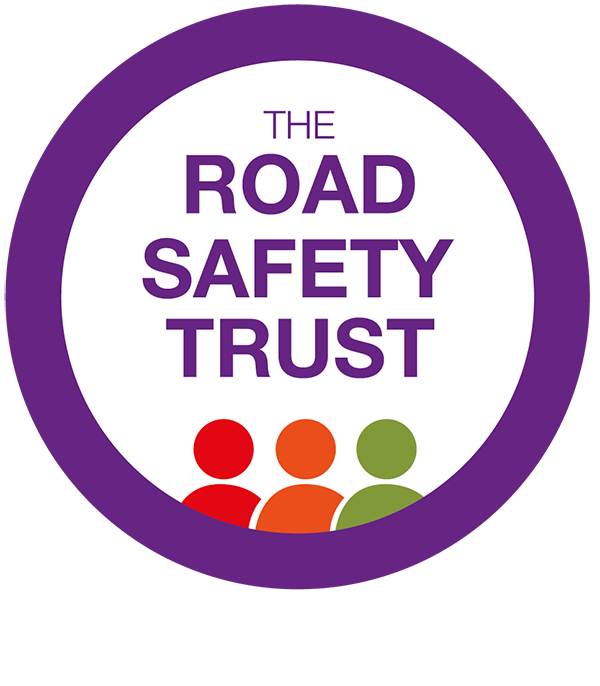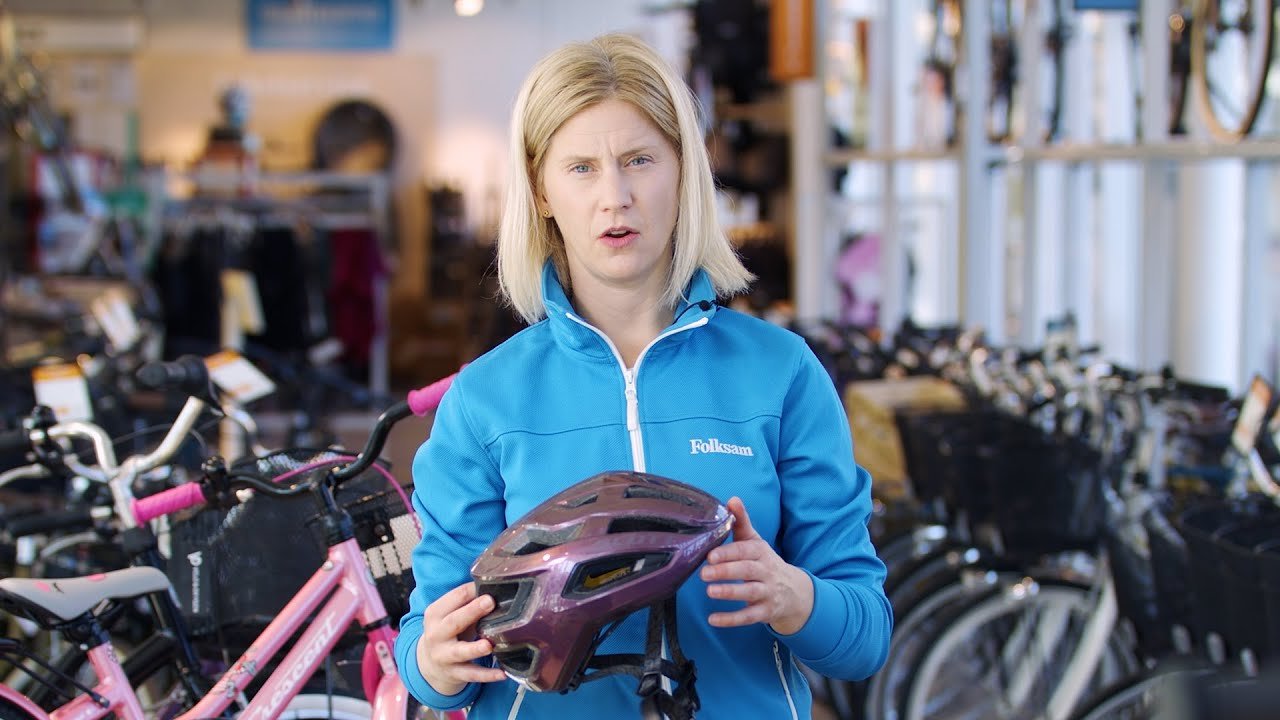International roundtable
The roundtable was held on Thursday 18 March, 2021, 13.30 – 15.45 (GMT). It was delivered online via Zoom.
The primary objective of this International Roundtable was to influence the cycle helmet safety testing regime in the EU, so that safety standards are improved to include rotational impacts.
About the event
Presently, there is a minimum safety standard, EN 1078, that needs to be met in order for any bicycle helmet sold in the EU to obtain the CE mark.
However, unlike the safety rating scheme for motorcycle helmets, SHARP or the Euro NCAP safety rating scheme for cars, the impact testing required by the existing EU minimum safety standard for bicycle helmets is considered to be rather lax. The result is that bicycle helmets meeting EN 1078 standard requirements may not perform adequately in real-life crashes.
The current EU test protocol focuses on helmet retention and on direct impact to the surface of the helmet, with a target of reducing the risk of skull fracture.
The existing minimum safety standard does not examine oblique impacts that inflict rotational forces on the head and which can result in consequent concussion injury to the brain.
The primary objective of this International Roundtable is to influence the cycle helmet safety testing regime in the EU, so that safety standards are improved to include rotational impacts. While the secondary objective is to work towards a harmonised rating scheme for consumers at the point of sale.
The Road Safety Trust has adopted the rating system used by the Swedish insurance company Folksam, but different testing houses appear to be using different systems. Discussions at this Roundtable will explore how best to progress this for the benefit of consumers and retailers.
13:30 Welcome
Professor Oliver Carsten
The welcome was provided by Oliver Carsten, Roundtable Chair, Road Safety Trust Trustee and Professor of Transport Safety at the Institute for Transport Studies, University of Leeds.
Oliver Carsten
Oliver Carsten is Professor of Transport Safety at the Institute for Transport Studies, University of Leeds. His major research focus is on driver interaction and safety with new driver support systems.
He led the UK national project on Intelligent Speed Assistance and has acted as Chair of the Road User Behaviour Working Party of PACTS, the Parliamentary Advisory Council for Transport Safety.
Oliver has provided advice on safety policy to the UK Department for Transport and to the European Commission, especially on behalf of the European Transport Safety Council.
Oliver was a member of the European Commission’s GEAR 2030 High-Level Group on the future of the European automobile industry, as well as a member of the Cooperative Intelligent Transport Systems (C-ITS) Platform.
He is an attendee at the meetings of UNECE (United Nations Economic Commission for Europe) in the area of automation and a member of the Informal Group of Experts on Automated Driving (IGEAD) under UNECE WP.1.
In addition, he is editor-in-chief of the academic journal Cognition, Technology and Work.
13.40: Why did Folksam start conducting consumer tests?
This session was delivered by Helena Stigson, Senior Researcher at the Folksam Insurance Group.
Helena Stigson
Helena Stigson is a specialist in traffic safety for Folksam Insurance Group. She completed her PhD in 2009 at Karolinska Institutet in Stockholm. Since 2014, Helena has held the post of Associate Professor at Chalmers University of Technology, Gothenburg, Sweden.
Helena has been responsible for several research projects in many different fields including vulnerable road users, child safety in cars, injury risk for car occupants and real-time driving data. Since 2012, she has been responsible for the test set-up, as well as the evaluation of consumer helmet testing.
Helena Stigson, Senior Researcher at the Folksam Insurance Group
14.05: Overview of the current EU cycle helmet safety testing regime EN1078, and what is involved in changing it?
This session was delivered by Peter Halldin, Chief Science Officer, MIPS AB and Chair of CEN (the European standards working group).
Peter Halldin
Peter Halldin, Assistant Professor at the Royal Institute of Technology, Stockholm
Peter Halldin is an Assistant Professor at the Royal Institute of Technology, Stockholm, Sweden. He is also one of the funders to the company MIPS AB and has been working part-time in the company since 2001.
His background is in head and neck injury biomechanics and since 1995 has been working to better understand how to protect the head and spine. Peter's research has for 20 years been focusing on helmet test methods and how to design safer helmets. A lot of the research has been on how to take the knowledge from real accident situations and simulate the real accident in the test laboratory.
Since 2012, Peter has also been the convener for one of the working groups within CEN TC158/WG11. WG11 has been focused to design a test method that is mimics a realistic oblique impact situation without making the test too complicated or expensive.
14:30: The CERTIMOOV Helmet Rating Platform
This session was delivered by Professor Remy Willinger of Strasbourg University.
Professor Remy Willinger, Strasbourg University
Remy Willinger
Remy Willinger is a Professor at Strasbourg University, Strasbourg, France. Since 1992 he manages a research team of about fifteen researchers working on head-Neck Impact Biomechanics.
The activity ranges from in vitro and in vivo biological tissues identification and modelling to human body characterisation and FE modelling. Once validated the numerical models are used for extensive real world accident simulation in order to derive tolerance limits relative to specific injury mechanisms.
Main results concern advanced adult and children head-neck models and improved model based injury criteria for skull fracture, subdural haematoma, neurological injury as well as whiplash injury. Human models are also coupled to protective systems in the automotive environment and helmet industry in order to optimise protection in respect to biomechanical criteria.
One of his key results is SUFEHM (Strasbourg University FE Head Model), a head injury prediction tool widely transferred to automotive and helmet industry. In this area, original evaluation methods lead to proposals for new test methods for, cyclists and motorcyclist protection known under CERTIMOOV.COM, a helmet rating platform dedicated to consumer as well as helmet manufacturers. Currently, Remy is member of Working Groups in several standard bodies, such as CEN, ECE, ISO and ASTM.
14.50: Update from Virginia Tech: any lessons we can take and use for progressing either the cycle helmet safety testing objective and/or a harmonised rating scheme for consumers
This session was delivered by Steve Rowson, Helmet Laboratory Director at Virginia Tech.
Steve Rowson
Steve is an Associate Professor in the Department of Biomedical Engineering and Mechanics at Virginia Tech and director of the Virginia Tech Helmet Lab. His expertise is in injury biomechanics, concussion, and safe product design and assessment. The overarching rationale of Steve's work is that if you understand the mechanical forces that cause injury to the human body, interventions can be developed to prevent injury from occurring.
Steve has worked on projects in automotive and military spaces, but his current focus is on reducing concussions in sports. He is particularly interested in translational research that results in new interventions to reduce injury across the population. Steve runs and maintains the Virginia Tech Helmet Ratings, which he co-developed with Stefan Duma. The ratings provide consumers with an objective assessment of relative helmet performance and serve as a design tool for helmet manufacturers.
Steve Rowson, Associate Professor, Virginia Tech
15.15: What needs to be done to improve minimum standards for helmets and how can a harmonised cycle helmet safety rating system be introduced in the EU and UK?
This session involved a discussion among all attendees. You can watch this in full here.
15.35: Conclusions and next steps
Oliver Carsten, Roundtable Chair







